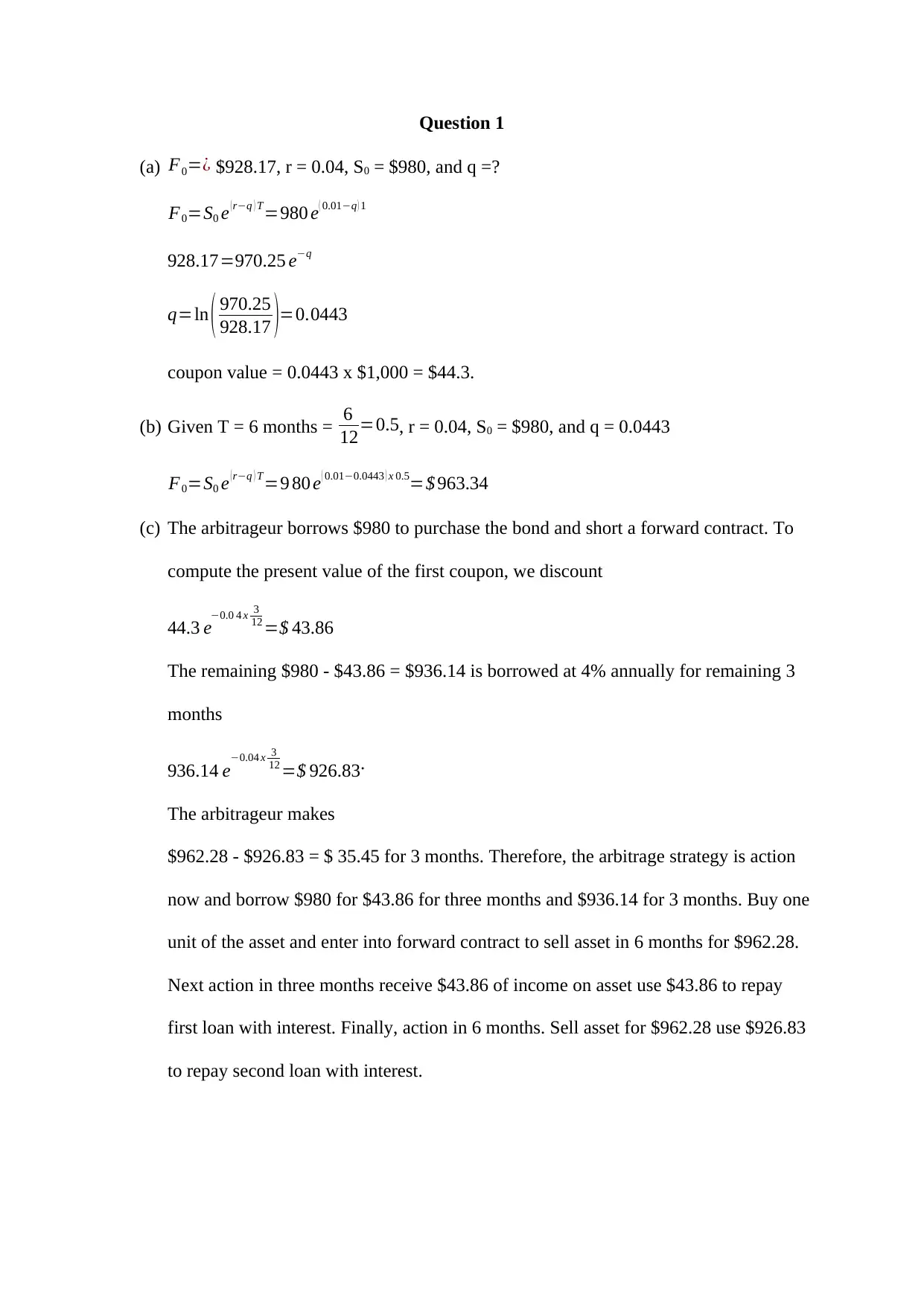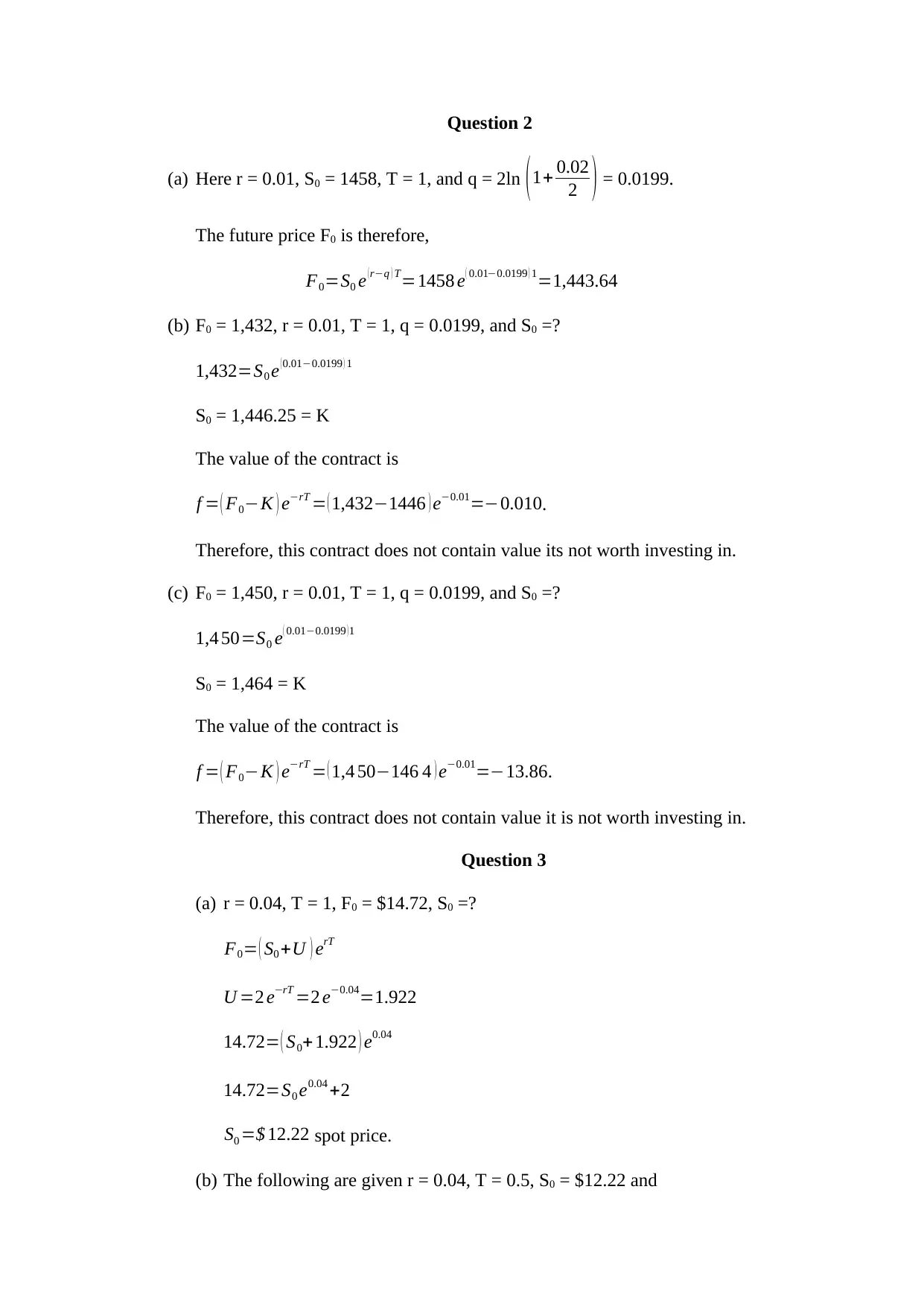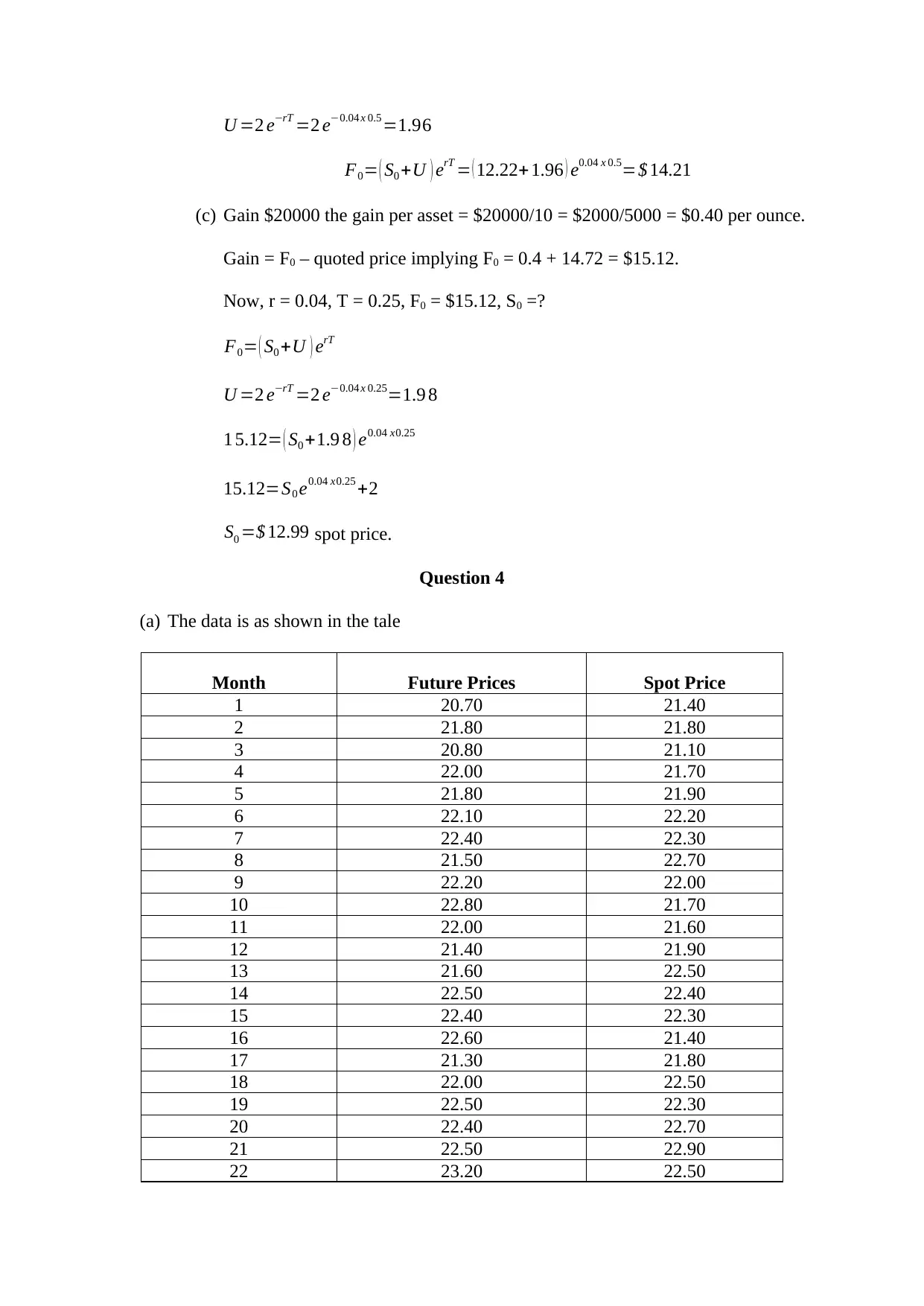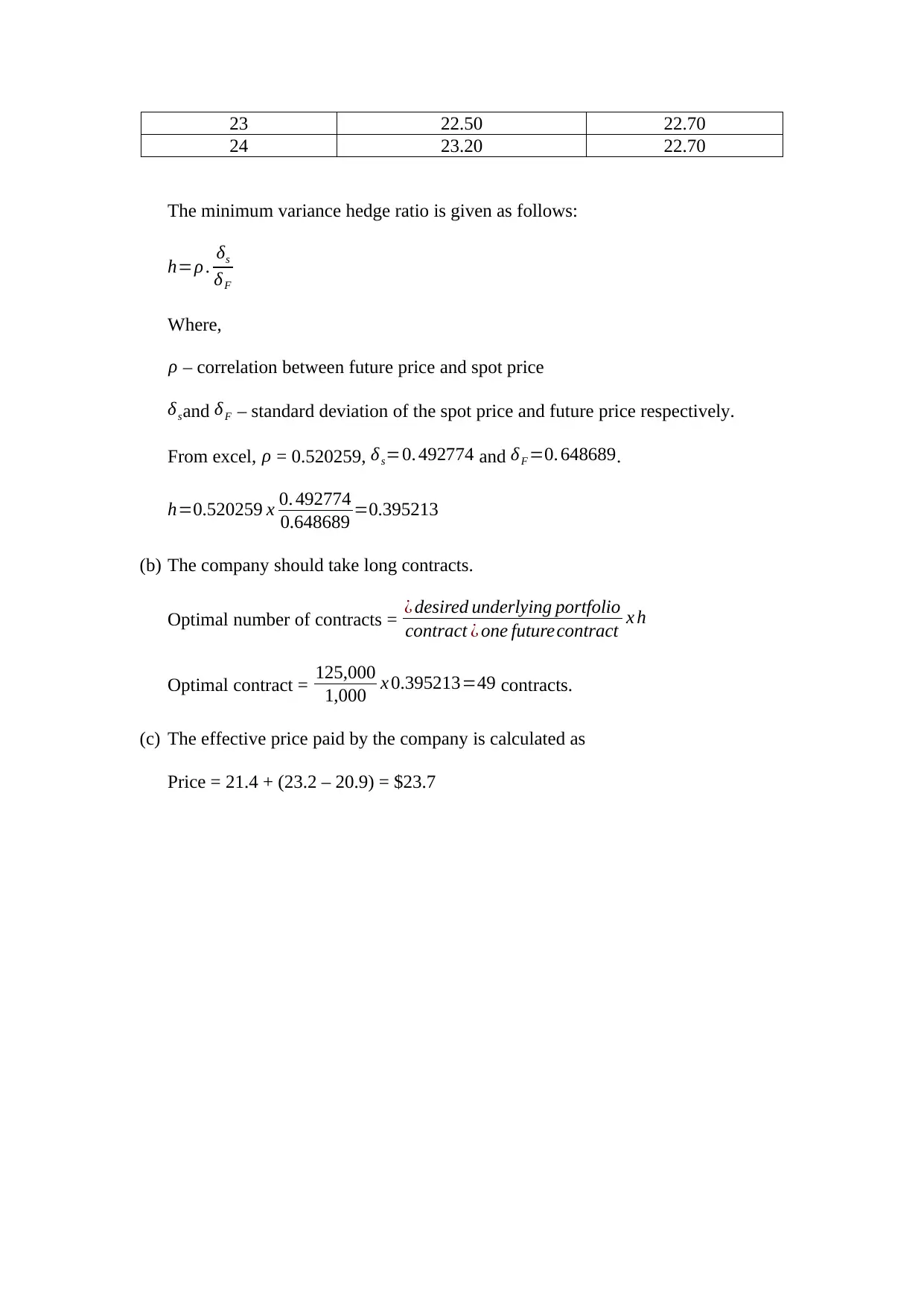Derivatives Pricing, Hedging, and Arbitrage Homework Solution
VerifiedAdded on 2023/01/19
|4
|887
|55
Homework Assignment
AI Summary
This document presents solutions to a finance assignment focusing on derivatives, hedging, and arbitrage strategies. The solutions cover various aspects, including calculating forward prices, determining the value of contracts, and understanding arbitrage opportunities. The assignment delves into concepts such as spot prices, future prices, and the impact of interest rates and coupon values. It also explores hedging strategies, including calculating the minimum variance hedge ratio and determining the optimal number of contracts. The solutions are detailed, providing step-by-step calculations and explanations to facilitate understanding of the underlying financial principles. The assignment covers key concepts related to the valuation of financial derivatives, risk management techniques, and the practical application of these concepts in real-world scenarios. The document is designed to assist students in grasping the intricacies of financial derivatives and their applications.
1 out of 4





![[object Object]](/_next/static/media/star-bottom.7253800d.svg)